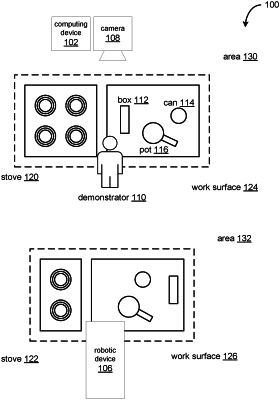| CPC G06N 3/008 (2013.01) [G06N 20/00 (2019.01)] | 28 Claims |

|
1. A computer-implemented method, comprising:
segmenting video data into at least a first segment and a second segment the first segment comprising video data representative of a first trajectory of a first object manipulated in a demonstration performed in a first set of circumstances, the second segment comprising video data representative of a second trajectory of a second object manipulated in the demonstration;
identifying a motion predicate satisfied by the first trajectory, wherein the motion predicate is identified based, at least in part, on a determination that movement of the first object on the first trajectory enabled movement of the second object on the second trajectory;
identifying a task predicate satisfied by the second trajectory, based at least in part on the second trajectory satisfying a logical condition defined in a domain definition;
identifying a goal of the demonstration based at least in part on the task predicate; and
causing one or more robotic manipulation devices to move from a first pose to a second pose based, at least in part, on performing the goal in a different second set of circumstances.
|